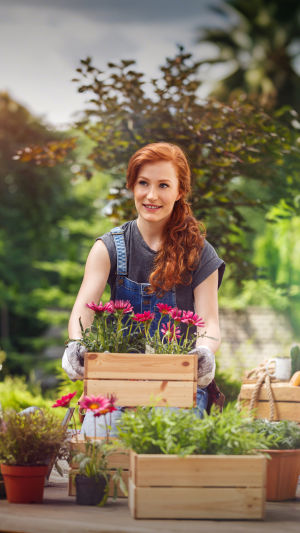Hello, fellow gardeners! Have you ever found your beloved flowers or plants suddenly attacked by pests or diseases? We know how frustrating that can be.
Together, let's explore the common enemies that threaten our plants and compare natural and chemical methods to keep them healthy and thriving.
By understanding these options, we can make safe and effective choices for our green friends. Ready to become a plant defender?
<h3>Common Plant Pests and Diseases We Face</h3>
In our gardens and homes, several pests frequently cause trouble. Aphids cluster on tender new shoots, Extracting sap and causing leaf curling. Thrips hide under leaves and damage buds. Mites and whiteflies also feed on leaf undersides, weakening plants.
Scale insects cling to stems and branches, while caterpillars and snails chew leaves, often hiding during the day and feeding at night. Common diseases include powdery mildew, which forms white powdery spots on leaves, and anthracnose, causing dark, sunken leaf spots. Root rot, often due to overwatering, damages roots and threatens plant survival. Knowing these foes helps us act quickly.
<h3>Natural Methods: Safe and Eco-Friendly</h3>
We prefer natural methods first because they protect not only plants but also our health and the environment. Here are some effective techniques:
• Water Sprays: Regularly spraying leaves and undersides with water can reduce pest populations by washing away eggs and small insects.
• Sticky Traps: Yellow sticky boards attract aphids, whiteflies, and thrips, while blue ones lure thrips specifically, helping monitor and reduce pests.
• Neem Oil: Spraying neem oil deters aphids and whiteflies by disrupting their feeding and reproduction. It's safe for beneficial insects and humans.
• Natural Predators: Introducing ladybugs or lacewings can naturally control aphids and other soft-bodied pests.
• Handpicking: For larger pests like caterpillars and snails, manual removal during early morning or evening is effective.
• Microbial Insecticides: Products containing Bacillus thuringiensis (Bt) target caterpillar larvae without harming other wildlife.
• Homemade Sprays: Garlic, chili, or nicotiana water sprays can repel or eliminate certain pests when applied carefully.
<h3>Chemical Methods: When and How to Use Them Safely</h3>
Sometimes natural methods are not enough, especially during severe infestations. When choosing chemical pesticides, we recommend:
• Selecting Low-Toxicity Products: Use pesticides with minimal harm to humans, pets, and beneficial insects. For example, malathion or insecticidal soaps at recommended dilutions.
• Following Instructions Strictly: Apply the correct dosage, timing, and protective measures to avoid residue and resistance buildup.
• Targeted Application: Spray only affected plants or areas to minimize environmental impact.
• Alternating Products: Rotate pesticides with different modes of action to prevent pest resistance.
• Avoiding Overuse: Excessive chemical use can damage plants and soil health.
<h3>Integrated Pest Management: Combining Strengths</h3>
We find the best approach is Integrated Pest Management (IPM), which combines natural and chemical methods thoughtfully. Start with prevention: maintain plant health through proper watering, fertilizing, and spacing to reduce pest attraction.
Monitor plants regularly to catch problems early. Use natural controls first, and only apply chemicals when necessary. This balanced strategy protects plants effectively while minimizing negative effects.
<h3>Daily Care Tips to Prevent Pest and Disease Outbreaks</h3>
• Keep plants well spaced to improve air circulation and reduce fungal diseases.
• Remove dead or diseased leaves promptly to stop spread.
• Avoid overwatering to prevent root rot.
• Clean tools and pots to reduce contamination.
• Inspect new plants before introducing them to your garden.
<h3>Let's Protect Our Green Friends Together!</h3>
Disease and pest control is a vital part of gardening that requires patience and care. By choosing the right methods and acting early, we can keep our plants healthy and vibrant. What pest challenges have you faced? Share your experiences and tips with us—we're all in this together!
Together, let's create a safe, thriving environment for our plants and enjoy the beauty they bring. Happy gardening!
This article is based on expert horticultural research and practical guidelines from trusted sources to provide safe and effective plant protection strategies.





